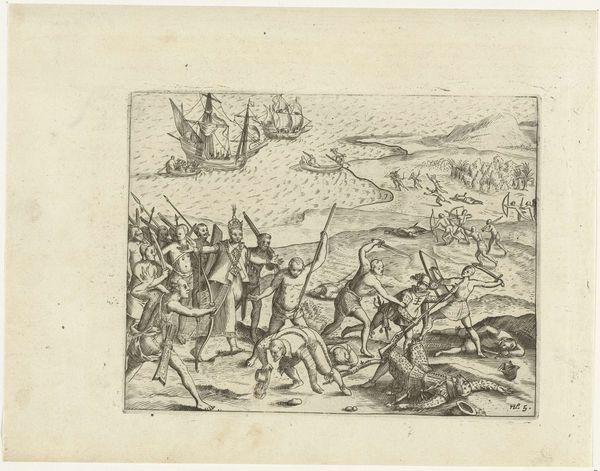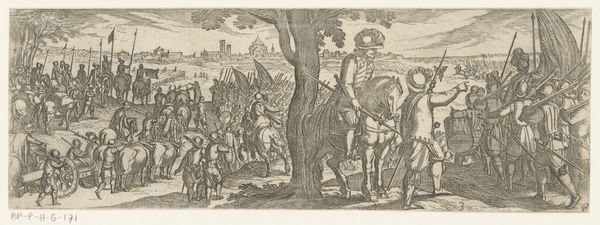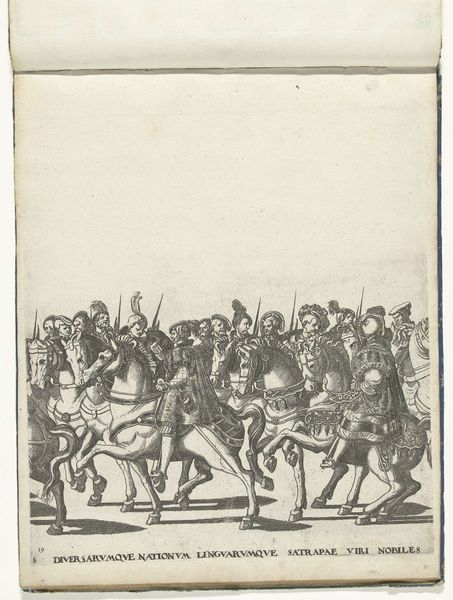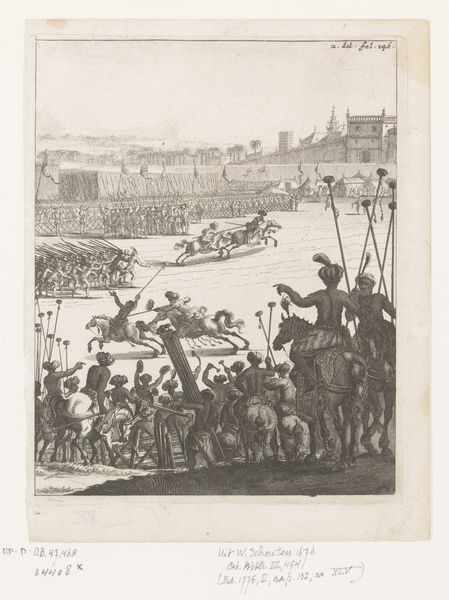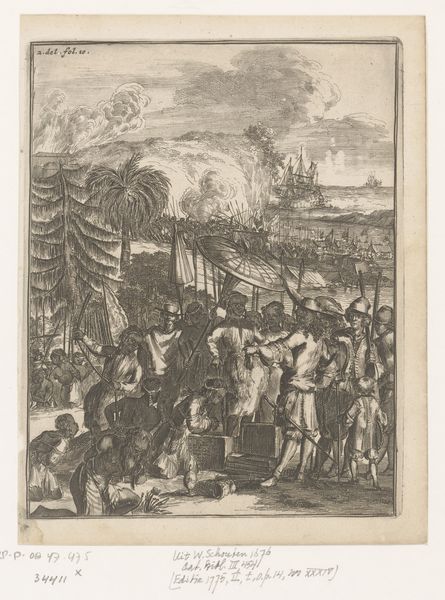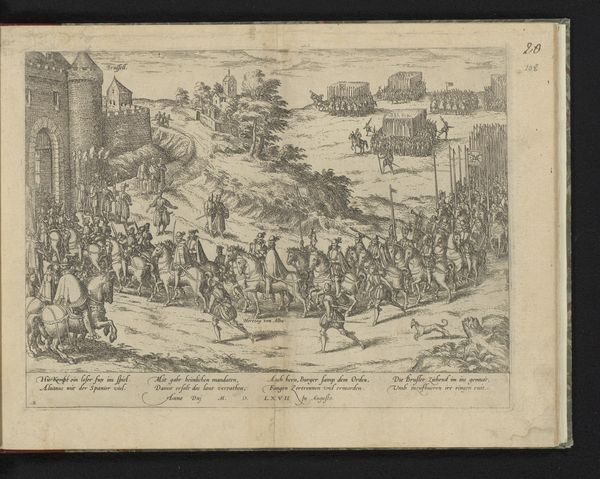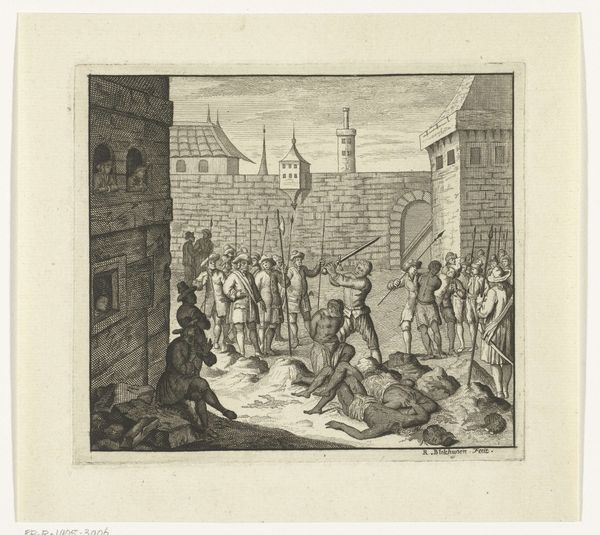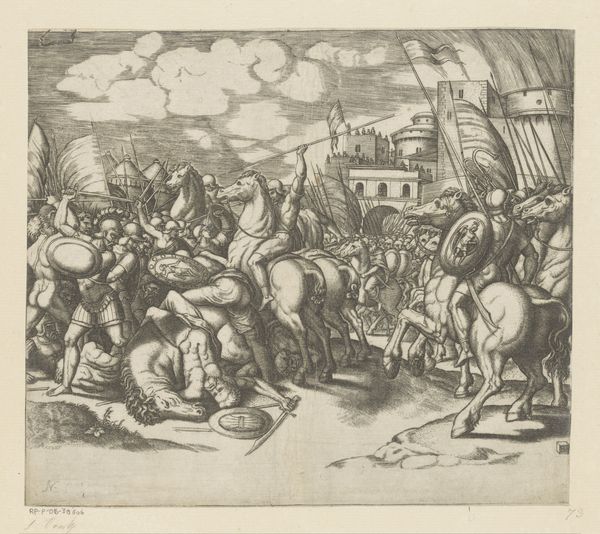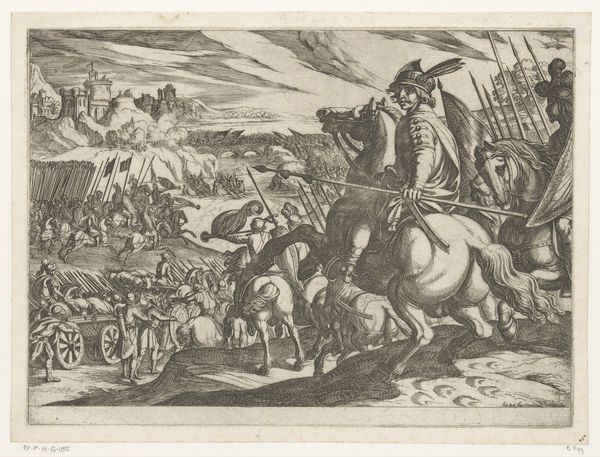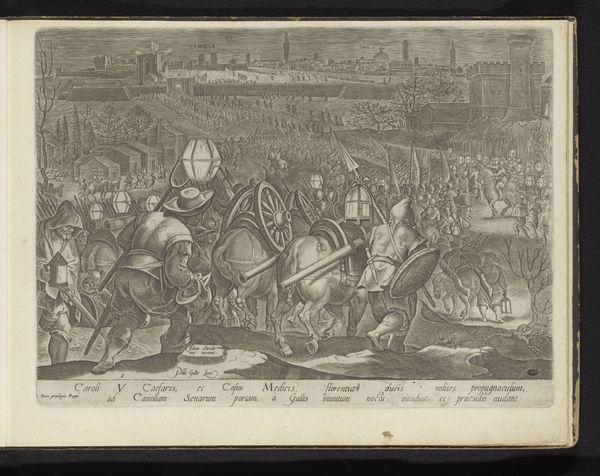
Vertrek van het Parijse leger onder leiding van koning Karel VI 1729 - 1733
0:00
0:00
print, engraving
#
baroque
# print
#
old engraving style
#
traditional media
#
landscape
#
cityscape
#
history-painting
#
engraving
Dimensions: height 327 mm, width 193 mm
Copyright: Rijks Museum: Open Domain
Curator: This engraving, dating from around 1729-1733, depicts “Departure of the Parisian Army Led by King Charles VI.” Look closely at the layering of line work; the cityscape receding into the distance and the texture of clothing on the figures. Editor: It feels so orderly for a departure scene. It is like an extremely curated enactment of power. There’s something unsettling in the precise rendering, hinting at potential coercion in these displays of leadership. Curator: Note how the architectural structures frame the procession, giving a sense of containment and theatrical framing of power. The contrast between the sharp angles of the buildings and the rounded forms of the soldiers create an interesting tension. Editor: Exactly. That containment underscores the power structures at play. It’s not merely a departure, it’s a demonstration. We should also think about how these portrayals served the artist’s political context. What did representing historical events in this controlled manner achieve? Who did it seek to benefit? Curator: Perhaps it's an attempt to create a legacy, solidifying and imposing structure. I agree there’s clearly intent in the display, emphasizing not only control over the narrative but also the visual elements, so the image itself becomes an artefact of authority. Editor: And in that performance, isn’t it striking how it renders a whole social structure, a militarized society of different agents of power? The King is presented centrally. Then there are the men. But where are the other populations this ‘army’ is implicitly designed to govern? Curator: These are all astute observations, leading us to recognize the work's engagement not just with visual construction, but also with constructing power, visually rendering control. Editor: Right, we shouldn’t just look at what is here but at who is being excluded, whose narrative is intentionally erased or simplified for a strategic visuality. Curator: Thank you, the work really demands such layered consideration of the social elements depicted. Editor: Agreed. Considering this today reminds me how even historical images become instruments in shaping our current cultural and political understandings.
Comments
No comments
Be the first to comment and join the conversation on the ultimate creative platform.

